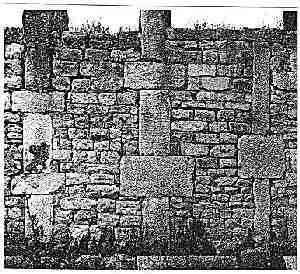
The city of Pompeii has been an archeological site in excavation since 1784. The volcanic disaster dated on August 24, A.D. 79, covered the entire city in ash and killed all those who could not escape. The ashes preserved the structures though, allowing archeologists to make several findings of this place.
While the transpired events of that day are of much interest to many, some choose to go further back in time. A group of archeologists in 1977 decided to dig down even further to reveal Pompeii's past through its masonry works.
Pompeii was settled by different cultures, and each brought a different mason influence. For example, when the Samnites occupied the town, they built buildings with larger rooms built with limestone in an Opus Quadratum style. This is a very basic style, with squared stones placed going across the wall.
ca 425 BC-290BC

290 BC-200BC
Around 200BC, Volcanic tuff replaced limestone and the construction method changed to Opus Incertum, a collection of irregular shaped rocks inserted into concrete walls.
200 BC-90 BC
In 90 BC, in an attempt to break away from the Romans, Pompeii joined the Italian League. In 80 BC however, Pompeii was once again invaded by the Romans. This new invasion led to new architecture and construction methods. Tuff was replaced with pyramidal block of Gray Lava; these were placed in a diagonal checkerboard pattern.
90 BC-79AD
And finally, the last evidence of masonry work was the Opus Vittatum, a combination of narrow rectangular stones along with larger blocks of rectangles.
27 BC-79AD
The city of Pompeii was hit by an earthquake in AD 62, destroying most of its buildings. Pompeians put a lot of effort into rebuilding their homes, but seventeen years later the city was covered in the ashes of the Vesivius volcanic eruption.
Slayman, Andrew. "The New Pompeii." Archeology Magazine. November/December 1997: 26-36,
Print.




No comments:
Post a Comment